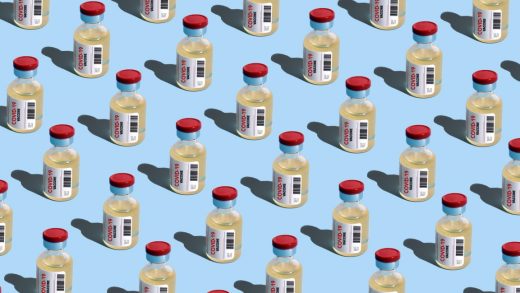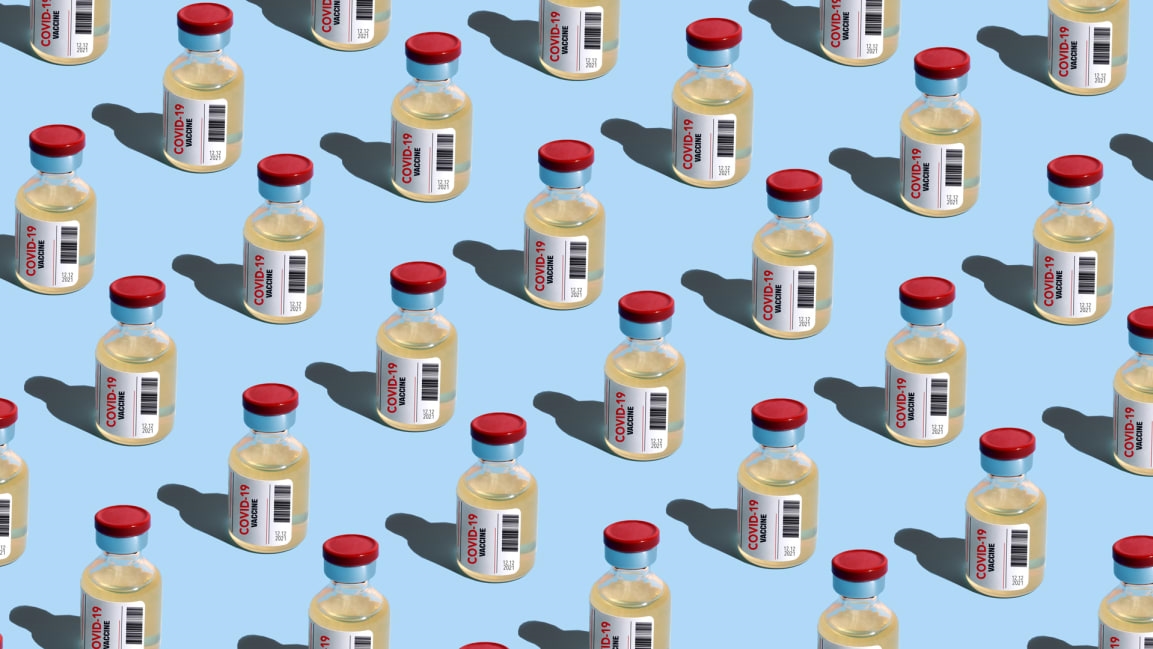You’re getting a COVID-19 booster. How about in 2022 and beyond?
Now that the Food and Drug Administration has approved COVID-19 vaccine boosters for all adults, people are looking ahead to what next year holds for COVID-19 and the future of vaccination. And many questions remain.
At the New Economy Forum this week in Singapore, Bill Gates said he expects that by mid-2022, deaths from COVID-19 and infection rates in general will drop lower than those for seasonal flu, so long as a new dangerous variant doesn’t crop up. That’s an even shorter timeline than pharmaceutical heads have predicted. In September, Moderna CEO Stéphane Bancel said that the pandemic was on track to be over in a year. Also in September, Pfizer CEO Alan Bourla said on ABC’s This Week that he agreed that people would be able to return to their normal lives in a year, but he anticipated that COVID-19 variants would continue to circulate. “I think the most likely scenario is annual revaccination,” he said.
Pharmaceutical companies are already preparing for a world in which annual COVID-19 vaccination is routine. Novavax (a biotech company based in Maryland) and Moderna are both in the process of developing a single shot that covers COVID-19 and flu. Pfizer, meanwhile, is in the process of developing a separate MRNA-based flu vaccine, which could be given at the same time as a COVID-19 vaccine.
Alessandro Sette, professor at the Center for Infectious Disease and Vaccine Research at the La Jolla Institute of Immunology, anticipates a gradual return to normal—however long that takes. What could complicate matters, he says, is the large number of people who remain unvaccinated and who have not developed immunity through infection.
“We have millions of people in that predicament all over the world,” he says. “Where there are millions and millions of people susceptible to infection—that could lead to a situation where infection rates flare up. The way out of that is increasing vaccination worldwide.”
Still, Sette doesn’t believe that SARS-COV-2—the coronavirus—will require a yearly shot. “The simple question, will we need a booster like in the case of flu? The answer is no,” he says. The reason a different flu vaccine is developed every year is because the flu itself is different every year, he explains. By contrast, the reason the FDA approved a COVID-19 booster is not because the virus has changed, but because immunity is waning. So for the moment, there’s no reason to think annual COVID-19 vaccination will necessarily become routine. “At the same time,” Sette admits, “we don’t really know.”
Will covid become like the flu?
Here’s why COVID-19 and flu may require different vaccination strategies. Sette says that in the summer and spring months, when flu transmission typically goes down among Americans, it incubates in another host: birds. “It evolves in birds and then comes back in the winter season to reinfect humans,” he explains. COVID-19 hasn’t done that. And, he says, it doesn’t seem to change nearly as much as the flu virus does.
The other reason has to do with how the human immune system works. “The immune system learns something once . . . it might remember,” Sette says. “If it sees [something] twice, it’s a better memory. And after a third time the memory continues to increase—like repeating the same lecture or seeing the same movie three times.” It stands to reason that a third shot will have a longer-lasting effect. Sette notes that after a third vaccination for hepatitis B, for example, immunity lasts forever.
A longer interval between immunization gives better results.
While immunity may have waned in people who received two doses of Pfizer and Moderna vaccines, a third dose could have stronger effects. According to Sette, the time between when shots were received may make a difference in how effective they are. “The two immunizations that were given for most vaccines were given fairly close to each other, a couple of weeks or three weeks apart. That’s not usually the best way to do it or the way it’s usually done,” he says, noting that the compressed schedule was a response to the urgency of the situation. But having a longer interval between immunization gives better results, he says, and there is reason to believe that a third immunization will offer both more effective and longer-lasting results.
Dr. William Moss, executive director of the International Vaccine Access Center at the Johns Hopkins Bloomberg School of Public Health, agrees that a yearly COVID-19 vaccine is unlikely. He says the only reason public health officials would recommend additional vaccination is if immune protection is not durable enough from the first three vaccines. But whether or not protection is sufficient depends on how public health officials define “durable.” If the goal is to prevent severe disease, hospitalization, and death, then we may not need more than this latest booster shot, Moss says. The immune systems of people who receive three shots—and those who were infected with COVID-19—may have learned enough to prevent severe COVID-19 infection indefinitely.
In that case, COVID-19 could become one of many respiratory diseases that we battle every year without annual vaccination. “If we really expect our vaccines to prevent asymptomatic infection, mild infection, and completely prevent transmission, that’s a very high bar for a vaccine,” Moss says. In the latter case, he could see pharmaceutical companies developing something like a nasal spray vaccine, which creates an immune response at the site of infection.
What if there’s another coronavirus?
A new COVID-19 variant could derail both public health efforts to bring the virus circulation under control and, possibly, the new and very effective MRNA vaccines developed to combat it. So far, Delta has been the most dangerous variant, yet despite its virulence, it has not been able to evade protection conferred by the current vaccines. Moss says that while it’s possible a new variant could emerge that isn’t susceptible to current vaccines, “there are evolutionary constraints on the virus.”
This has to do with the spike protein in SARS-COV-2, which is what allows the virus to hook into our cells. The MRNA vaccines direct human antibodies to look for and neutralize the spike protein to prevent infection. “The virus can—and I’m sure it has—mutate away from that, but those viruses can’t enter cells,” Moss explains.
That said, if there is an increase in breakthrough infections, or a need for a new coronavirus vaccine, we could see a vaccine that targets multiple variants. “A mix of different antigens from different flu strains is already commonly used,” says Sette of the La Jolla Institute of Immunology. In fact, researchers are already exploring a universal coronavirus vaccine that would fight not just other COVID-19 variants, but all viruses in that family.
“There’s no evidence that you would need a vaccine against different SARS variants mixed together,” Sette says. “But if that were the case, it’s feasible.”
Fast Company , Read Full Story
(56)



